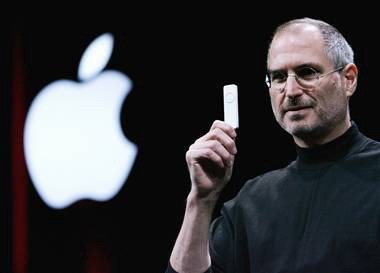The Pirates Abandon Ship
海盗弃船
Upon his return from Europe in August 1985, while he was casting about for what to do next,
1985年8月,乔布斯从欧洲回来,正在琢磨接下来要做些什么。
Jobs called the Stanford biochemist Paul Berg to discuss the advances that were being made in gene splicing and recombinant DNA.
他打电话给斯坦福大学生物学家保罗·伯格,闲谈基因拼接和重组领域取得的进展。
Berg described how difficult it was to do experiments in a biology lab,
伯格向乔布斯解释了在生物实验室做实验的困难程度,
where it could take weeks to nurture an experiment and get a result.
做一个实验并获得结果可能需要数周时间。
"Why don't you simulate them on a computer?" Jobs asked.
“为什么不在计算机上进行模拟实验呢?”乔布斯问道。
Berg replied that computers with such capacities were too expensive for university labs.
伯格解释说,对于大学实验室来说,具备这种能力的计算机太贵了。

"Suddenly, he was excited about the possibilities," Berg recalled.
“突然间,乔布斯就为这种现状所蕴含的可能性兴奋起来,”伯格回忆说,
"He had it in his mind to start a new company.
“他想到要创办一家新企业。
He was young and rich, and had to find something to do with the rest of his life."
他年轻、富有,要为自己今后的生活找点儿事做。”
Jobs had already been canvassing academics to ask what their workstation needs were.
乔布斯一直以来都在拜访学者,询问他们对计算机工作站的潜在需求。
It was something he had been interested in since 1983,
自1983年以来,他就开始对此产生兴趣。
when he had visited the computer science department at Brown to show off the Macintosh,
当时,他造访布朗大学计算机科学系,向他们展示麦金塔电脑,
only to be told that it would take a far more powerful machine to do anything useful in a university lab.
却被告知,在大学实验室里要比这强大得多的机器才能做出些有用的东西。
The dream of academic researchers was to have a workstation that was both powerful and personal.
学术研究人员的梦想是拥有一台强大的个人工作站。
As head of the Macintosh division, Jobs had launched a project to build such a machine, which was dubbed the Big Mac.
作为麦金塔部门的负责人,为了生产这种计算机,乔布斯推出了一个新项目。该项目被戏称为“大Mac”
It would have a UNIX operating system but with the friendly Macintosh interface.
它将采用Unix操作系统和友好的麦金塔界面。
But after Jobs was ousted from the Macintosh division, his replacement, Jean-Louis Gassee, canceled the Big Mac.
但是1985年夏天乔布斯被逐出麦金塔部门后,他的继任者让-路易·加西便取消了这一项目。













